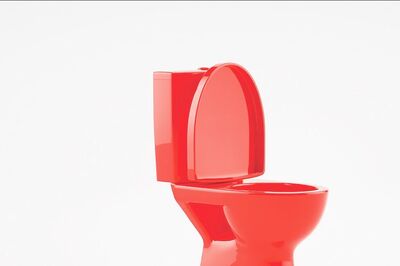
views
Patna: As Bihar heads for the crucial Lok Sabha elections, social engineering has become the buzzword and both the grand alliance and National Democratic Alliance (NDA) are going an extra mile to woo the Other Backward Classes (OBC) and Dalits. With a firm focus on the social justice plank, both the alliances are once again trying to invoke the ghost of Mandal politics at the cost of upper castes.
Since caste equations have always been detrimental to winning elections in Bihar, the two major alliances have stuck to the ‘caste only’ strategy with careful selection of the 'right caste' candidates for all the 40 Lok Sabha seats in the state. But the upper castes have been given a poor deal by both the alliances, with the grand alliance fielding only nine candidates and the NDA 13. Altogether, six parliamentary seats are reserved for the Scheduled Castes in Bihar.
The grand alliance comprising Congress, RJD led by Lalu Prasad, Rashtriya Loktantrik Samata Party (RLSP) led by Upendra Kushwaha, Hindustan Awami Morcha (HAM) of Jitan Ram Manjhi and Vikassheel Insan Party (VIP) floated by Mukesh Sahni has put up 18 candidates from the Backward Castes (BCs) and Extremely Backward Castes (EBCs). In Bihar, the Backward Castes category includes Yadavs, Kurmis, Koeris and Vaishyas, while the EBC category has over 100 small castes constituting nearly 30 per cent of the total votes.
Of the 18 seats, the numerically preponderant Yadavas have grabbed lion’s share of 10 seats followed by four each from the EBCs and Koeris (also called Kushwaha). Adhering to Muslim-Yadav (MY) formula, the RJD and Congress together have fielded six Muslim candidates, particularly in the north-eastern region of the state, where Muslim population varies from 30 per cent to 65 per cent.
The grand alliance has not fielded anyone from Kurmi and Vaishya castes -- the two major castes known to be staunch supporters of Nitish Kumar’s JD-U and BJP respectively. As the grand alliance, especially the RJD, is more inclined towards Mandal politics, as the upper castes have got a raw deal from all the four grand alliance partners with only nine candidates. Of these nine seats, five belong to the Rajput caste, two to Bhumihars and one candidate each to Brahmin and Kayastha community.
The RJD has chosen only Rajput candidates among the upper castes as other three castes -- Bhumihars, Brahmins and Kayasthas -- have been its enemies ever since the Mandal Commission report was implemented in the early nineties. The upper castes are also annoyed with the RJD due to its opposition to the 10 per cent quota for economically poor among the upper castes announced recently by the Narendra Modi government.
But the RJD leaders claimed that the grand alliance has tried to give adequate representation to all castes. “We have tried to accommodate as much upper castes as possible through our allies. Due representation has been given to all castes,” said state RJD president Ram Chandra Purvey.
An RJD leader who did not want to be identified put it succinctly, saying, "We are following Mayawati model in candidate selection. Our known vote base is there to stay and if we give ticket to some influential leaders of another community in some areas tactically, it will improve our tally."
The NDA comprising the BJP, JD-U and LJP has also tried to woo the backwards by fielding altogether 19 candidates from the BC and EBC category. The Yadavs, considered to be die-hard supporters of Lalu Prasad, have been given five seats –three from BJP and two from JD-U. The NDA’s focus is aimed at wooing the EBC votes as seven candidates – five by JD-U and one each by BJP and LJP have been chosen from this category.
Among the NDA, the JD-U has given emphasis on Koeris by choosing three candidates from this caste in a bid to counter the influence of union minister Upendra Kushwaha, who switched over from the NDA to the grand alliance camp a couple of months ago.
Kushwaha is trying to emerge as the sole leader of the Koeri caste, which constitutes nearly 5 to 6 per cent of the total electorate in Bihar. He was once considered close to Nitish Kumar, a dominant leader of Kurmi caste having sizeable population in central Bihar. The Kurmis are much less in percentage -- nearly 2 per cent -- than the Koeris.
In political and social semantics, Kurmis and Koeris were called ‘Luv-Kush’ and remained inseparable for decades. But as political ambitions of their respective leaders grew over a period of time, Nitish and Upendra fell apart and turned arch rivals, and the Luv-Kush combination broke eventually. Apart from three Koeris, the JD-U has fielded a Kurmi candidate, also the sitting MP, from Nalanda seat, considered the bastion of Nitish Kumar and one Vaishya candidate. The BJP, too, has fielded two candidates from Vaishya caste, which has been its traditional vote bank.
Compared to nine upper caste candidates fielded by the grand alliance, the NDA has fielded altogether 13 candidates from the upper castes. In NDA too, the Rajputs got the lion’s share with seven candidates, including five from the BJP and one each from JD-U and LJP. There are three Bhumihars in the fray –one each from the BJP, JD-U and LJP – followed by two Brahmins and one Kayastha from the BJP.
Both the alliances seem to have worked on the strategy to divide the numerically preponderant and dominant among the scheduled castes. Of the six reserved seats, the grand alliance has tried to woo the Chamars, also called Ravidas, by fielding four candidates from this community having sizeable population in the state, followed by one each from Pasi and Musahar communities. On the contrary, the NDA has fielded four candidates from Paswans, also called Dusadhs, and one each from Chamar and Musahar communities.
Despite the tall claims of development, all national parties and their allies have resorted to last-minute permutations and combinations based on constituency-wise caste equations in the selection of candidates. “Caste can never be buried in Bihar. The buzz word for all political parties is 'social engineering', which can deliver the desired results in the crucial 2019 electoral battle,” said D M Diwakar of Patna’s A N Sinha Institute of social studies.
After the spectacular victory of the NDA in 2009 polls, Bihar chief minister Nitish Kumar had claimed that people no more want caste-based identity but enjoyed the newfound cross-caste Bihari identity. He had claimed that the caste divide has almost been mitigated due to development work. But when he quit NDA to join the RJD bandwagon before the 2014 Lok Sabha polls, the political scenario changed and the idea of Bihari identity went for a toss.
As things stand today, the different castes have, to a great extent, decided which side of the political divide they would stand. The NDA is confident of his vote base among the EBCs, which constitute nearly 30% of the total population, and SC votes (15.7% as per 2001 census). “Our main idea is to strike a balance among the various castes so that no one feels ignored,” said deputy chief minister Sushil Kumar Modi.
The author is a senior journalist. Views are personal.




















Comments
0 comment